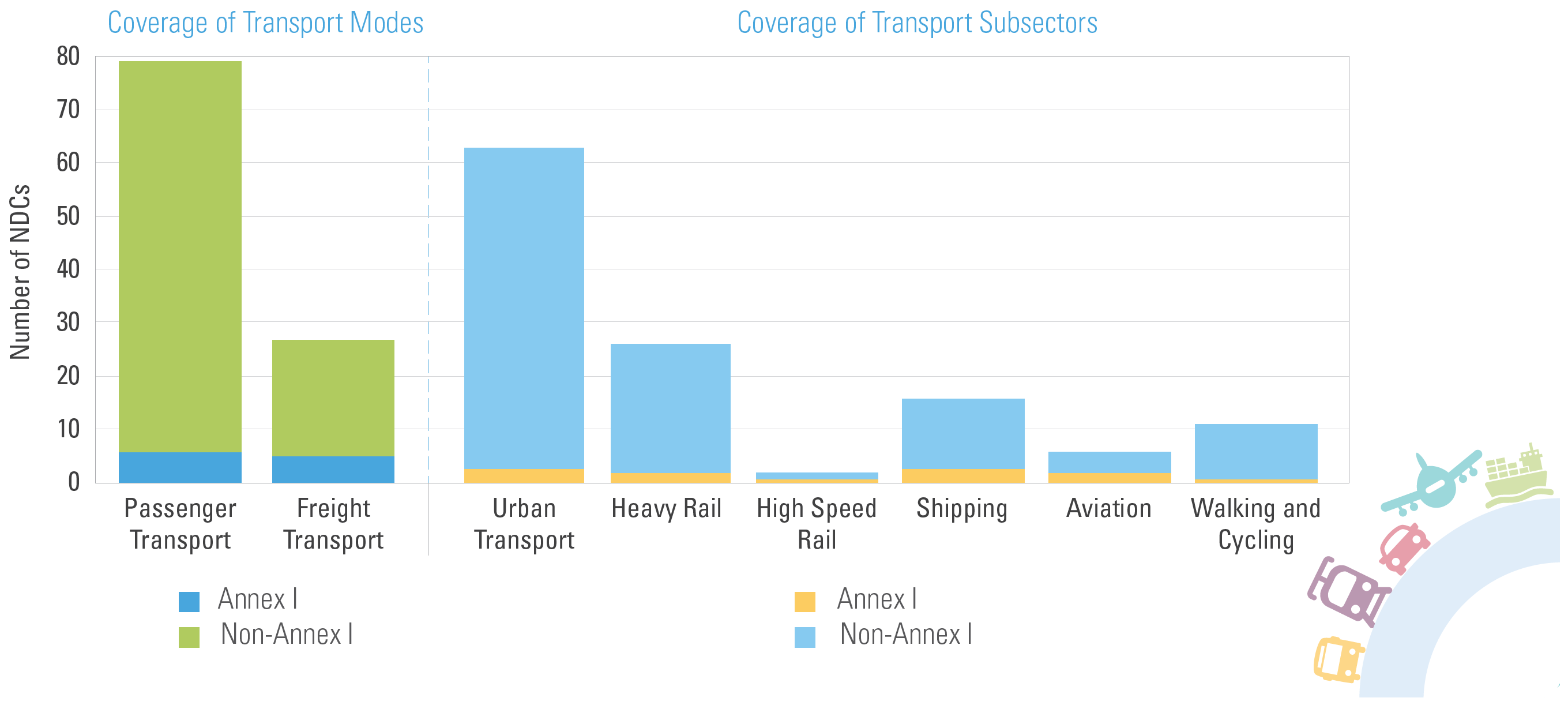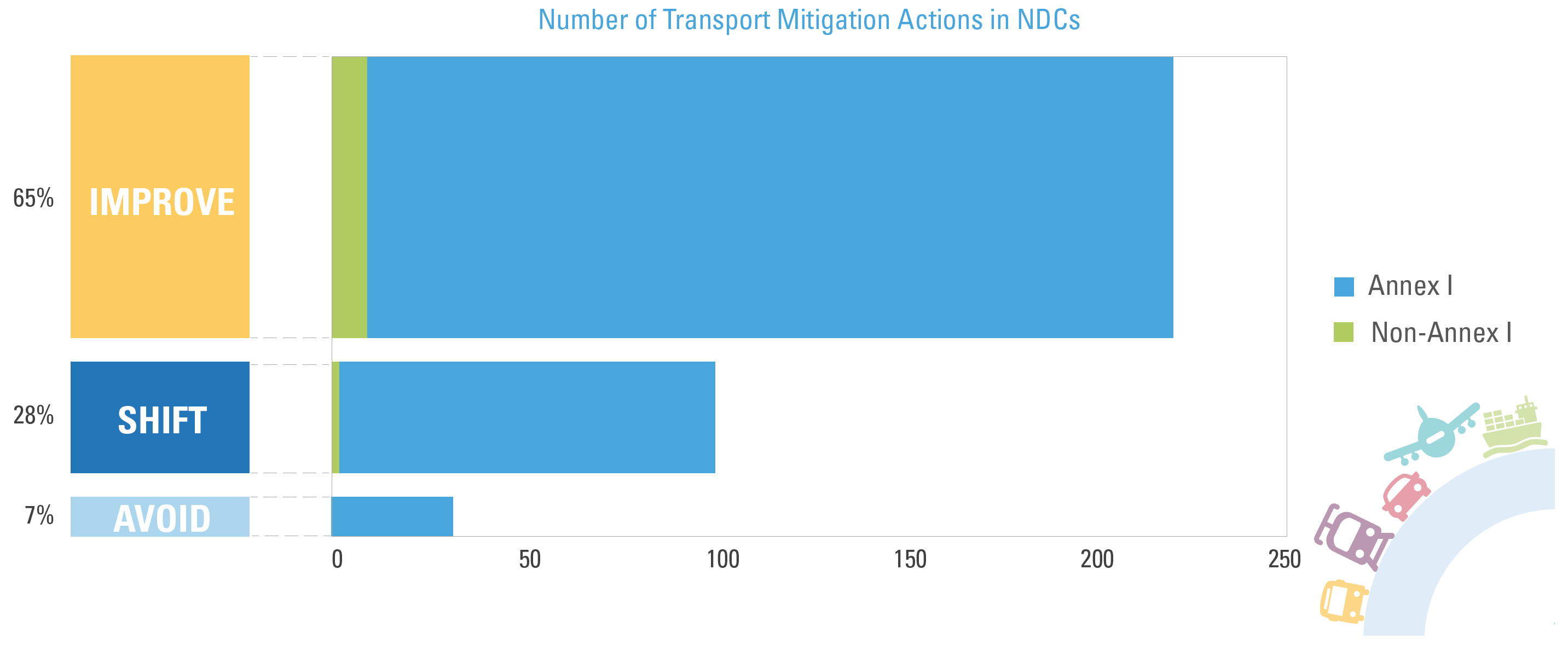Transport Mitigation and Adaptation Measures in Nationally Determined Contributions (NDCs)
The NDCs communicate intended mitigation and adaptation actions by UNFCCC Parties. The first NDCs were submitted as Intended Nationally Determined Contributions (INDC) by Parties in 2015 and, with the ratification of the Paris Agreement, the INDCs officially became NDCs. The NDCs must be submitted in a five-year cycle, with the second generation due in 2020. The process is supported by the Global Stocktake (Paris Agreement Article 14), which will take place in 2023 and every five years thereafter, to take stock of the implementation of the Paris Agreement. As of July 2018, 195 Parties have signed (i.e. preliminarily endorsed) the agreement, with 179 of those having ratified (i.e. agreed to be legally bound by) the agreement. Approximately 89% of global emissions are covered by the Parties that have ratified the agreement, with China (20%) and the United States (18%) accounting for a large share of global emissions.
Of the submitted 166 NDCs representing 193 countries, 76% highlight the transport sector as a mitigation source, though only 8% include transport emission reduction targets. Passenger transport is well-represented in NDCs; included in 64% of those that highlight transport. Urban transport measures are mentioned in 38% of NDCs, while other areas receive less attention. Freight transport contributes around 40% of emissions but appears in only 21% of the NDCs with transport measures. The majority (about 65%) of the 356 proposed mitigation measures in NDCs represent ‘Improve’ strategies. This focus on technological measures helps explain why NDCs do not fully optimize the mitigation potential of the transport sector, which can be achieved by implementing more holistic polices that include ‘Avoid’ and ‘Shift’ strategies.Transport adaptation has received less attention than mitigation in NDCs. Though adaptation is included in some form in nearly every NDC, transport adaptation appears in 29 NDCs (16%), while 10 NDCs (4%) identify specific transport adaptation measures (e.g. infrastructure resilience projects), underscoring an opportunity to further emphasize transport adaptation in the NDC framework (See also Box 2: Adaptation Policy Measures in the Transport Sector).

